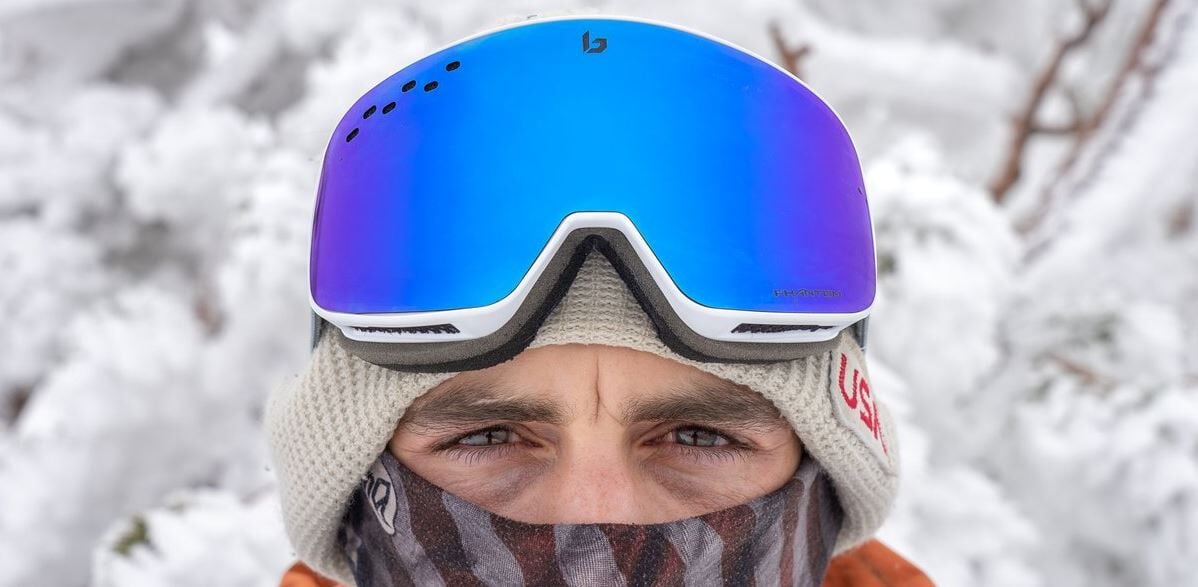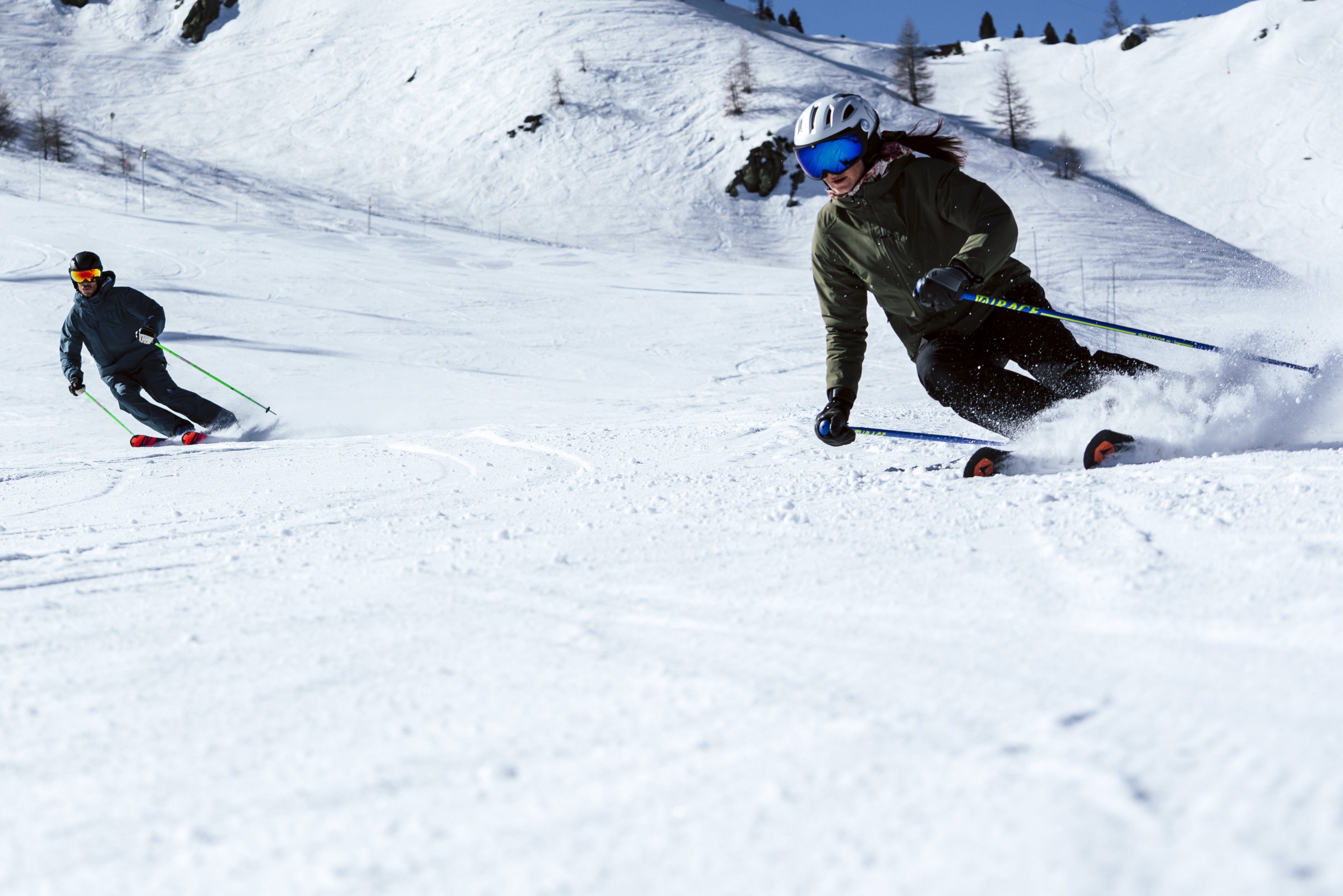MASCHERA DA SCI FOTOCROMATICA: QUALI VANTAGGI?
21 marzo / 4 minuti di lettura
In alta montagna, il clima può cambiare rapidamente: c'è il sole quando si parte sulle piste, ma nuvole fitte coprono il cielo un'ora dopo. Quindi, invece di portare con sé diverse lenti in tasca, perché non optare per una maschera da sci fotocromatica? Chiamata anche maschera a tinta variabile, si adatta alle condizioni meteorologiche per garantire allo sciatore una visione ottimale, in tutte le condizioni climatiche. Scopri in questo articolo i vantaggi della maschera fotocromatica.
.jpg)
FOTOCROMIA, COS'È?
Sviluppato per la prima volta dalla società americana Corning Glass Work Inc negli anni '60, il vetro fotocromatico è un vetro correttivo con la proprietà di tingersi in funzione della quantità di raggi ultravioletti (UV) che riceve. Pertanto, quando l'esposizione ai raggi UV è forte, le lenti ottiche si scuriscono gradualmente. Al contrario, quando è debole o scompare, le lenti tornano gradualmente al loro stato chiaro.
Le lenti fotocromatiche possono essere fabbricate in diversi modi: sia con vetro minerale, sia con plastica termoindurente (detta "organica") o termoplastica (detta "policarbonato").
I VANTAGGI DELLA TECNOLOGIA FOTOCROMATICA
Perfette per destreggiarsi tra le diverse intensità di luce, le lenti fotocromatiche presentano numerosi vantaggi. Che il cielo sia sereno o che il tempo sia brutto (neve, nuvoloso, nebbia), si adatteranno facilmente alla tua pratica dello sci.

Tra le loro caratteristiche principali, le maschere da sci fotocromatiche offrono:
- Una grande reattività ai cambiamenti di ambiente e alle variazioni di luminosità;
- Un miglior comfort visivo, poiché riducono l'affaticamento degli occhi e l'abbagliamento del sole;
- Una protezione costante contro il 100% dei raggi ultravioletti nocivi (UVA e UVB), con indici di filtrazione che vanno da 1 a 4;
- Una protezione degli occhi indipendentemente dalle condizioni climatiche.
Generalmente, le lenti fotocromatiche impiegano circa trenta secondi per scurirsi completamente e circa 2-5 minuti per tornare chiare. Grazie a questa tecnologia ottica, non è più necessario acquistare diversi occhiali da sole: è sufficiente una sola maschera da sci fotocromatica per godere di tutte le condizioni di neve possibili.
> Da leggere anche: Maschere e occhiali da sci: quali trucchi per evitare l'appannamento?
PHANTOM DI BOLLÉ, LA LENTE FOTOCROMATICA AD ALTE PRESTAZIONI
Sviluppate da Bollé, le lenti fotocromatiche Phantom offrono una definizione e una chiarezza ottica eccezionali, indipendentemente dai paesaggi e dalla luminosità.
Disponibile per la maggior parte delle correzioni e in una scelta di colori variegata, la lente Phantom combina le specificità di diverse tecnologie avanzate che le consentono di raggiungere questo alto livello di prestazione:
- Un filtro fotocromatico molecolare che si adatta in un batter d'occhio alla luminosità ambientale, garantendo un'acuità visiva nitida e precisa, anche in condizioni meteorologiche estreme;
- La tecnologia LTS (Low Temperature Sensitivity), che assicura un'elevata performance fotocromatica su un'ampiezza termica molto ampia (da -10 °C a 20 °C);
- Una pellicola polarizzata, applicata per ridurre l'abbagliamento e migliorare il contrasto (disponibile solo sulle lenti Phantom+).
Vero vantaggio per scendere le piste mantenendo un'eccellente visione, la lente Phantom passa da categoria 1 a categoria 3 in meno di trenta secondi.
Per gli sportivi amatoriali come per i più esperti, Bollé propone un'ampia scelta di maschere da sci che possono essere equipaggiate con la tecnologia fotocromatica Phantom. Ad esempio la NEVADA NEO, la prima maschera magnetica della gamma Bollé, o il modello MAMMOTH, che dispone di una lente extra-large per offrire un campo visivo senza pari.

+ PHANTOM+: LA SINERGIA PERFETTA TRA FOTOCROMIA E POLARIZZAZIONE
Per offrire agli amanti della neve e degli sport di scivolamento una chiarezza visiva sempre migliore, Bollé ha aggiunto alle sue lenti fotocromatiche Phantom una pellicola semi-polarizzata per ottenere Phantom+.
Mentre una lente polarizzata al 100% blocca l'interezza dei riflessi prodotti dai raggi solari sulla neve, la pellicola polarizzata al 50% di Bollé lascia passare abbastanza luce da permettere allo sciatore di distinguere il ghiaccio e la neve. Inoltre, grazie a Phantom+, la lettura dei rilievi del terreno è ottimizzata.
> Da leggere anche: Lenti polarizzate, quali vantaggi?